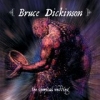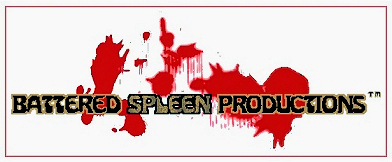Purple Nurple
There are three basic story types, the first is man against man, the second is man against himself, and the third is man against nature. Without outlining them there are said to be only seven plot lines. Every story has been told before by someone somewhere. There are several keys to keeping things interesting though. A story can be told from a different perspective than before. A story can have more than one plot line at work in the narrative, which can vastly changes things. A story can also build upon another. History builds upon itself, and so can horror.
Just as a series of books, films, or stories that are connected need continuity so too is there a greater continuity in the horror genre itself. This genre level continuity forms a mythos. Certainly individual works and individual authors can have a mythos, but if either level is successful and catches the minds of enough people then that singular mythos can be added to the greater one. Certainly we have seen this with such seminal works as Dracula, Frankenstein, and the collective works of H. P. Lovecraft. Works about vampires, raising the dead, and horror beyond human comprehension have been affected by these smaller mythoi (this is the plural form of mythos) ever since their rise to prominence.
A mythos is a wonderful thing that can add history, depth, and of course variety to stories. A horror creator need only to use a particular style and drop a couple of names or archetypes to tap into an existing mythos. Sometimes an author can create a new mythos through the structure that their story has. Such a story will strike a chord with the audience and stay with them. By striking such a chord a horror creator can spread their own mythos into the genre mythos by inspiring other creators to borrow elements and emulate certain story conventions. The perfect example of course is Lovecraft's Cthulhu Mythos.
In the entirety of Killing Time - Horror E-Rag™'s run thus far the non-fiction articles have been putting forth information about the horror genre's main mythos. Some of it is subjective based upon familiarity and personal bias, but only the smallest percentage. The non-fiction articles, the stories presented in this publication have a slightly higher percentage of difference from the genre's mythos. This is how the same essential elements can be told again and again. Writing new material is about changing the perceptions of what has come before, deviating from the mainstream, and generally twisting parts of the overall mythos.
Take for instance the vampire. The most common literary form of the vampire is driven purely by the mythos that Bram Stoker created with his story "Dracula". The Stoker vampire is allergic to garlic, carries around dirt from his homeland, and has to be stabbed with a wooden stake to be put to rest. It is seen again and again in books and movies. Not all of these stories are totally alike though. Sometimes it has to be a wooden stake made only from ash wood. Sometimes the vampire can be frightened with a cross or other holy symbol, sometimes not, or based upon who the vampire was before undeath.
Certainly for the vampire at least there are different legends of similar creatures from around the whole world, but sometimes the differences have sprung only from an author's imagination. One example might be a person who can lay hands on another and drain out all of their life-force instead of their blood and the person killed by such a creature is dead and stays that way. Traditional twist on the vampire mythos come from the identity of the first vampire. Stoker's first vampire is analogous to Vlad the Impaler, others include Judas Iscariot, and others yet Cain. This directly plays into the concept of the mythos because such stories have built their own divergent mythoi.
New twists are what it is all about, but still there must be acknowledgement of what has passed, and respect for those who have given the fodder in which to grow new horrific fruit. Sometimes the use of previously created mythoi is not just for the exploitative purposes but in the form of homage. Imitation is the sincerest form of flattery and on occasion parody is the clearest indication that a work is admired. So even as this publication has tapped into what has come before it, it also seeks to forge new directions and to to give a good nod and a wink to everything that has come before. This all would seem to indicate that there are three story types to creating exciting new stories as well: tradition, revision, and the purple nurple.
© 2002 Robert G. Male
Mood: drained.
Music: Behind Blue Eyes by the Who, and The Book of Thel by Bruce Dickinson.
 | Buy these at Amazon.ca Click Images to Buy |  |





0 Comments:
Post a Comment
<< Home